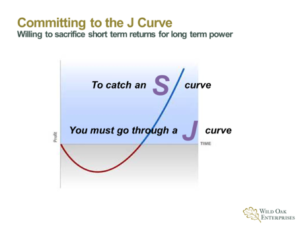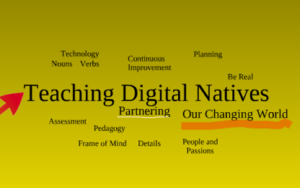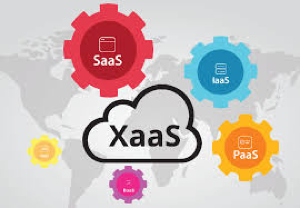
September 24, 2019
In the digital world,
you have to think and act like a software company

For businesses of any size to be successful today, they need to think and act like a software company. Whether they are actually developing software or just deploying and leveraging it, they need to configure their business model to operate like one.

It starts with the mindset of the CEO, C-Suite, and Board of Directors. John Foley, CEO of Peloton, says “We don’t want to be a stationary-bike company. We want to be a disruptive technology company.” Armed with that mindset, he calls what his company does “fitness-as-a-service.” His investors have endorsed his vision in their latest round of financing at $550 million which valued the 7-year-old company at $4 billion.

Defining a company as a software business allows leaders to cross over industry borders. John Deere, a manufacturer of tractors, acquired a startup specializing in computer vision and machine learning. Their new “software-fueled vision” allows farmers to identify weeds better and spray herbicides only where they’re needed improving crop yields and reducing chemical use by 95%.

Union Pacific railroad created and launched PS Technology, a separate commercial technology business, to sell digital technology apps the company originally developed for its own use to partners and competitors. As a result, they are now one of the largest providers of locomotive simulation systems which has generated $50 million in new revenue.
A 2017 McKinsey study documented that those companies who aggressively pursue business innovation through digital technology have a 12% ROI vs. a 6% ROI for those who just invest to protect their core business.
A Harvard Business School study showed that leading digital companies generate better gross margins, better earnings, and better net income than organizations who have not yet adopted a digital-first business growth strategy. Early digital adopters delivered a three-year gross margin of 55% vs. 37% for digital laggards.
Software companies prioritize progress over perfection

The speed at which new digital applications and tools are developed, adopted, and then abandoned to an even better version is unprecedented. In this always connected 24/7 world, there is a belief that organizations have to work faster and faster just to keep up.
One of the product development disciplines software companies adopt is the Minimum Viable Product (MVP) which allows them to launch an early version of their offer and get real time feedback from early users as to what they need to change and add to make it better. The major benefit from an MVP is they learn what they don’t know or didn’t anticipate their customers responses would be to the product. This approach allows them to prioritize progress over perfection.
Amazon CEO, Jeff Bezos, believes that “most decisions should probably be made with somewhere around 70% of the information you wish you had. If you wait for 90%, in most cases, you’re probably being slow.” He believes the risks of seeking perfection outweigh the risks of making a wrong decision especially if you can learn from it and quickly respond to real time customer feedback.
Organizations that think and act like software companies are committed to the J Curve
The reason most well-established companies are being disrupted by digital technologies is that they don’t have the resolve and discipline to redirect scarce resources from funding short term returns to funding long term opportunities. Venture capitalists call this investing in the J Curve to catch the S Curve as shown below.

Successfully traversing the software J Curve can lead to very good S Curve outcomes as shown in the Adobe example below:
In 2013, Adobe Systems embarked on a major corporate pivot away from their established product/license sales model to a cloud-based software-as-a service subscription model. Their $4 billion annual revenue declined 8% in 2013 and was flat in 2014. It started its rebound in 2015 and has grown to $9 billion at year-end 2018 with over 80% of new revenue growth coming from subscriptions.
One other skill that organizations who think and act like software companies utilize is that they have developed very compelling long-term value proposition stories for the investor market. Even companies like Netflix, Spotify, and Uber who have yet to become profitable still enjoy high market valuations.
Established companies are partnering with digital natives to think and act like software companies

There are multiple ways companies can acquire the relevant skills and capabilities to think and act like a software company. They can hire digital-native talent; reskill their existing talent or form joint ventures and alliances with digital-native organizations.
Recent research studies have shown that digital leaders are more likely than digital laggards to form alliances and partnerships to gain these skills. For example:

McDonald’s wanted to improve the functionality and performance of its mobile app in the Netherlands, Sweden, and Japan. They partnered with Plexure, a New Zealand-based company that specializes in mobile engagement software. Plexure processed more than 40 million customer data points and identified multiple personalized offers McDonald’s could make to its customers in those markets which resulted in a 700% increase in offer redemptions in the Netherlands.
McDonald’s also just announced the acquisition of Apprente, a Silicon-Valley based start-up specializing in conversational voice-based ordering technology. The technology is able to understand different accents and is “expected to allow faster, simpler, and more accurate order taking at the Drive Thru” and can be incorporated into kiosks and mobile ordering.

When Walt Disney wanted to improve the customer experience at Walt Disney World, it did not invest $1 billion in upgrading a ride like Space Mountain. Instead, it partnered with MyMagic, a software platform, the lets Disney World guests use a digital wristband (MagicBand) as their ticket, hotel key and payment device for touring the park.

Raytheon has moved from using software as a business enabler to treating it as a new business growth opportunity. Starting back in 2007, it began partnering with and acquiring cybersecurity software companies. It created a new business unit called Forcepoint in service to CEO, Tom Kenney’s vision that “with the Internet of things, cyber is pervasive in everything we do, the entire globe has become essentially a cybereconomy.”



